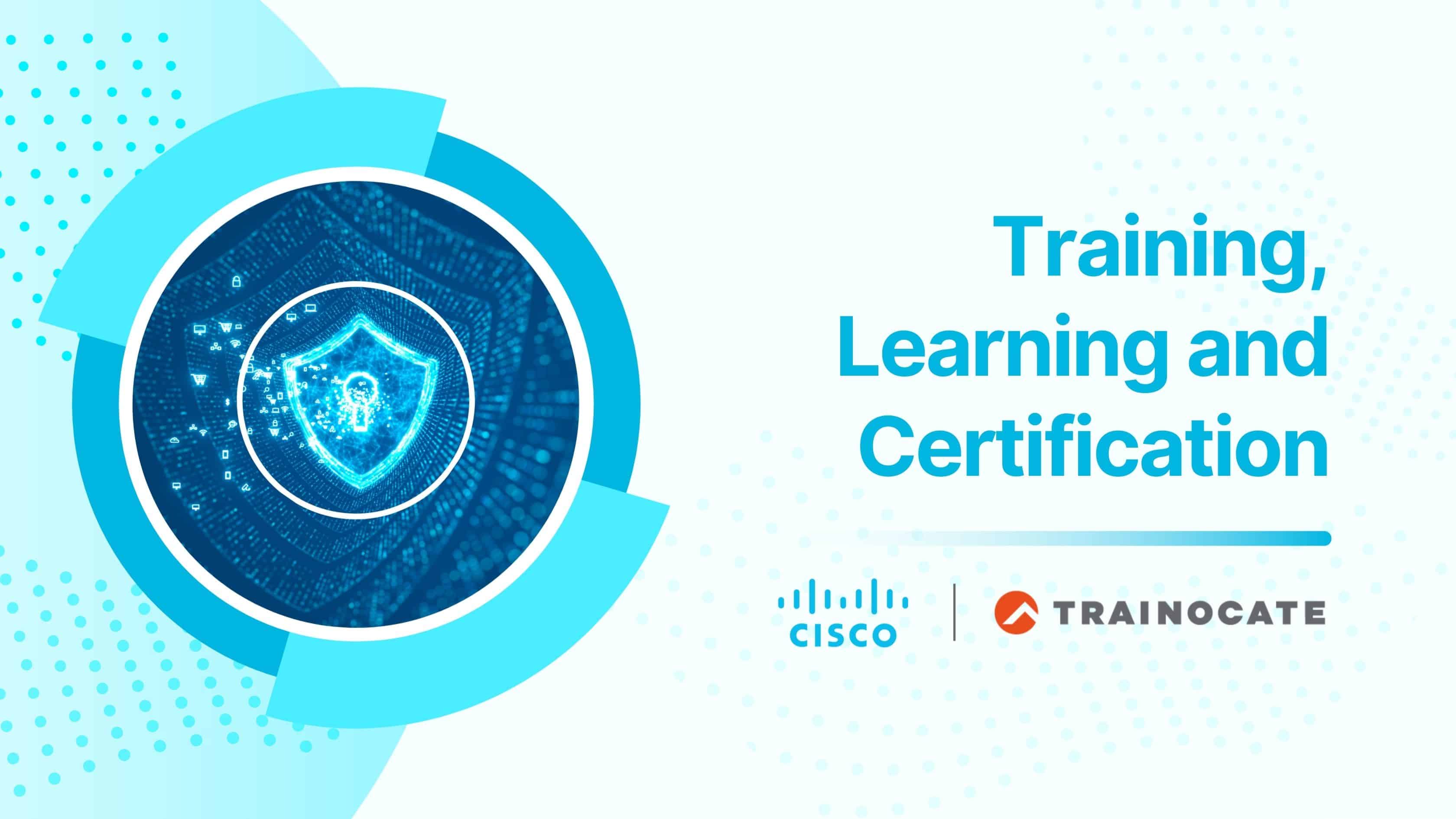Top Networking Skills Malaysia Professionals Need in 2025
Top Networking Skills Malaysia Professionals Need in 2025
Are Your Networking Skills Up-to-Date?
Get Ahead in Malaysia’s Tech Industry in 2025
In Malaysia’s tech landscape, networking skills can make or break an IT career. If you’re looking for the most sought-after Networking Skills in Malaysia, you’ve come to the right place. Our guide outlines the essential tools for networking success tailored to the Malaysian market, setting the stage for your career growth in the fast-paced world of technology.
According to Enterprise Networking Global Outlook Report 2025-2028, the global Enterprise Networking market size was valued at USD $429.8 billion in 2023 and is expected to expand at a CAGR of 6.3% during the forecast period (2023-2028), reaching USD249 billion by 2028.
Why Are Advanced Networking Skills Crucial for the Malaysian Job Market?
The value of these skills is reflected in significant salary growth. According to a recent report from Randstad, professionals who switch jobs within the emerging technology sector can expect a salary increase of 15% to 35% (Source: Randstad Malaysia 2024 Market Outlook).
This robust growth is fueled by a projected improvement in the domestic economy well into 2025, creating a stable environment for the IT sector’s expansion. Moreover, the IT industry continues to offer high median salaries across all specializations as of 2025.
However, what differentiates a successful IT professional in such a competitive landscape? The key lies in the continuous development of new skills that ensure competitiveness and functional expertise within the industry. Data analytics skills have become a highly sought-after asset in the IT professional’s arsenal. Data analytics skills are particularly crucial, standing out as the crown jewel in the IT skills treasure chest. But let’s not forget about networking.
We have also listed networking skills as one of the top in-demand IT skills in 2025, further emphasizing its strategic importance for career advancement in Malaysia’s growing job market.
By mastering these top skills like networking, you will be well-positioned to carve your niche in Malaysia’s thriving IT job market and propel your career forward.
What Cloud Networking Skills Do I Need to Master?
Now that we’ve established the importance of networking skills, let’s dive deeper into one of the most crucial elements of modern IT: cloud networking.
According to Spacelift, software-as-a-service (SaaS) spending growth is predicted to rise from $205,221 million in 2022 to $243,991 million in 2024 — an increase of 15.9%. This rapid growth underscores the cloud’s pivotal role as the backbone of today’s digital services, encompassing everything from applications and storage to a vast array of services delivered over the internet.
However, cloud networking goes beyond mere familiarity with cloud infrastructure. It requires a robust skillset that empowers IT professionals to effectively leverage cloud services and safeguard sensitive data. Let’s unpack these areas one by one.
Understanding Cloud Infrastructure
The global cloud computing market will have a compound annual growth rate (CAGR) of 16.3% through 2026.
Understanding cloud infrastructure, particularly the networking aspects, requires a multi-faceted skillset. It’s like learning a new language, but one tailored to building and managing secure cloud networks. While programming languages like Python and JavaScript can be valuable for developing cloud-based applications, the core focus for networking professionals lies elsewhere.
Database management skills are vital within cloud environments, particularly in understanding the various types of database services available. Moreover, knowledge of Linux is beneficial for cloud professionals, as many cloud service platforms are compatible with Linux operating systems.
Last but not least, understanding the fundamentals of DevOps is valuable as it integrates development and operations to improve the efficiency of application deployment.
How Important is Securing Data in the Cloud?
The number of people using personal clouds such as Dropbox, Google Drive, and iCloud has more than doubled from 1.1 billion in 2014 to an estimated 2.3 billion people today
The number of people using personal clouds such as Dropbox, Google Drive, and iCloud has more than doubled from 1.1 billion in 2014 to an estimated 2.3 billion people today (Source: Spaceshift).
With great power comes great responsibility. As we move more data and services to the cloud, the need for robust security measures becomes paramount. Protecting digital data in the cloud is no small feat. With data types ranging from device identifiers and IP addresses to browsing interactions, the stakes are high.
Managing cloud data securely involves skills in cloud storage, networking hardware, and understanding cloud-native application platforms. This is where risk analysis comes into play. It involves assessing the risks and vulnerabilities that could negatively impact an organization’s cloud data. After all, a secure cloud is a happy cloud.
Which Cloud Services Should I Learn?
The move to the cloud is a massive global trend, with spending on public cloud services projected to hit $679 billion in 2024 and exceed $1 trillion by 2027 (Source: Pulumi Cloud Market Report). This underscores why cloud networking is no longer an optional skill; it’s a core requirement.
The power of the cloud isn’t just in its infrastructure or security. It’s also in its services. Cloud infrastructure services such as Software as a Service (SaaS), Platform as a Service (PaaS), and Infrastructure as a Service (IaaS), are essential components of modern IT environments.
Professionals skilled in utilizing services from major providers like AWS, Google Cloud Platform, and Microsoft Azure are positioned to effectively manage network infrastructure.
- End-user spending on IaaS is forecast to grow by 26.6% in 2024.
- PaaS spending growth is expected to reach 21.5% in 2024.
- SaaS spending growth is predicted to rise from $205,221 million in 2022 to $243,991 million in 2024 — an increase of 15.9%.
But wait, there’s more. Azure’s AI services can be integrated into network management processes, enhancing IT roles by providing advanced capabilities for customer service and data analysis. Mastering these advanced cloud services equips network management professionals with the tools to access insights from big data and automate complex customer interactions, making them invaluable in the IT industry.
What Are the Key Skills for Fortifying Network Security?
According to Gartner, by 2027, 75% of security teams will have on-boarded at least five tools to manage cyber-physical systems (CPS) security in operational, production or mission-critical environments, which is a major increase compared with one or two they might use today.

Beyond the cloud, there’s another aspect of networking that’s equally important: network security. With rising cyber threats, advanced network security skills have never been more crucial. The journey to fortifying networks involves implementing effective intrusion detection systems, ensuring compliance with cybersecurity measures, and crafting efficient incident response strategies.
Let’s put on our security hats and explore these areas.
Implementing Intrusion Detection Systems
Revenue is expected to show an annual growth rate (CAGR 2024-2028) of 14.61%, resulting in a market volume of US$134.50m by 2028.
In the world of network security, defense is the best offense. That’s where intrusion detection systems come into play. These systems are like the guardians of your network, protecting it from security threats that can lead to activities such as eavesdropping and false route advertisement.
After all, a secure network, maintained by a network security engineer, is the backbone of a strong IT infrastructure.
Cybersecurity Measures and Compliance
Malaysia reached the highest score on the National Cyber Security Index among countries in the Asia-Pacific region, 79.22 out of 100.
In the ever-evolving landscape of network security and information security, staying up-to-date with the latest cybersecurity measures and regulations is crucial. The cybersecurity landscape is being shaped by various trends, such as:
Additionally, compliance knowledge is essential. Following govern digital operations helps organizations maintain a strong security posture by mandating data protection best practices.
Finally, physical security measures and security tools for wireless equipment are critical components of overall network security. Controlling physical access to IT infrastructure and securing wireless networks through encryption and access controls mitigate various cyber risks, including those arising from the trends mentioned above.
Crafting Incident Response Strategies
Cybersecurity firm Kaspersky revealed that in 2023, its detection systems blocked 26.85 million “Internet-borne” attacks in Malaysia, representing 74,000 attacks per day.
When it comes to network security, prevention is crucial, but so is response. Crafting efficient incident response strategies is like having a game plan for cyberattacks, ensuring you’re prepared to contain attacks, limit damage, and maintain trust. These plans typically encompass preparation such as:
Different cyberattacks may require tailored responses. For instance, a phishing attack might necessitate immediate user education and password resets, while a malware outbreak could involve system isolation and system wipes.
Regular drills and simulations are essential to test the effectiveness of these plans. Because in the game of network security, practice makes perfect. A weak response plan can have severe consequences, such as data breaches, financial losses, and reputational damage.
Virtualization Technologies:
Optimizing Network Management
Virtualization technologies are another key aspect of networking. These technologies revolutionize network management by enabling:
Flexibility and Scalability: Virtual Machines can be easily provisioned, migrated, and scaled based on changing needs.
Efficiency: Server consolidation reduces hardware costs and improves resource utilization.
Improved Network Management: Virtual networks can be segmented and isolated, simplifying network administration & enhancing security.
Let’s unpack each of these areas.
Deploying Virtual Machines
The virtual machine market size has grown rapidly in recent years. It will grow from $17.08 billion in 2023 to $20.26 billion in 2024 at a compound annual growth rate (CAGR) of 18.6%
Deploying virtual machines is like building a digital city. It involves selecting a source such as an existing virtual machines, virtual machines template, or virtual hard disk, and then determining the deployment destination, which could be a private cloud, a host, or a library.
Configuring hardware settings for a virtual machine can differ based on whether it is a generation 1 or generation 2 machine. And don’t forget about the Virtual Machine Manager (VMM), which allows for the configuration of virtual machines using templates, including setting static IP addresses and availability settings.
Managing Virtual Networks
The global virtual networking market size was valued at USD 32.15 billion in 2022 and is expected to grow at a compound annual growth rate (CAGR) of 25.6% from 2023 to 2030.
Managing virtual networks is like being the mayor of this digital city. A virtual machine (VM) is a digital representation of a physical computer that operates on a hypervisor, lacking direct interactions with physical hardware.
Deploying virtual machines entails the setup and management of server and storage clusters within a virtual environment.
Wireless World:
Skills for Next-Gen Wireless Networking
In the wireless world of networking, staying up-to-date with next-gen skills is crucial. This involves navigating wireless standards, securing networks, and obtaining wireless networking certifications.
Let’s explore these areas in more detail.
What Does Network Configuration and Troubleshooting Involve?
Let’s switch gears and talk about another key aspect of networking: network configuration and troubleshooting. Expertise in these areas is pivotal for ensuring that network devices communicate effectively and internet functionality is smooth. This skill set involves managing network protocols, diagnosing network issues, and streamlining network performance.
Let’s take a closer look at each of these areas.
Continuous Learning and Certification:
Your Pathway to Networking Excellence

In the dynamic world of networking, continuous learning and certification serve as your pathway to excellence. This journey involves identifying in-demand skills, choosing the right certifications, and applying real-world examples.
Let’s embark on this journey together.
Identifying In-Demand Skills
To navigate your career path effectively, it’s crucial to identify the most sought-after networking skills in Malaysia’s IT job market. Some of the highly sought-after skills include:
Proficiency in cloud networking, encompassing cloud architecture, deployment, and management within networking environments.
Specialized system and network skills for roles such as system administrators and network administrators, focusing on optimizing network performance, troubleshooting, and security management.
Competency in data visualization tailored for networking professionals, emphasizing the ability to analyze and interpret network data to make informed decisions and optimize network performance.
Expertise in wireless networking, validated through certifications that demonstrate proficiency in wireless networking principles, technologies, and security practices.
Building expertise in these networking domains, including cloud networking, system and network administration, data visualization, and wireless networking, is key to advancing in an IT career within Malaysia’s competitive job market.
Choosing the Right Certifications
In the dynamic landscape of networking, navigating the ever-evolving complexities requires a multifaceted approach. While technical proficiency is essential, validating your skills through strategic certification selection significantly enhances your professional standing.
This guide explores how strategically selected certifications can propel you on your chosen career path within the realm of wireless networking.
Summary
We’ve embarked on a comprehensive exploration of the essential IT networking skills that fuel Malaysia’s booming tech sector. We’ve delved into the intricacies of cloud networking, unraveled the complexities of network security, mastered the art of configuration and troubleshooting, navigated the virtualized landscape, and conquered the world of wireless networking. Throughout this journey, we’ve emphasized the unwavering importance of continuous learning and strategic certification to achieve networking mastery.
But remember, this is merely the launchpad for your extraordinary IT career. The dynamic realm of networking is constantly in flux, and like the adaptable nature of networks themselves, the key to success lies in your unwavering commitment to growth and evolution











